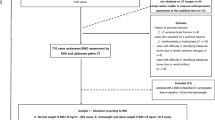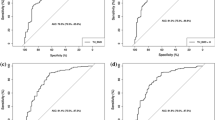Abstract
Low bone mass pathology otherwise called osteoporosis assessed by BMD quantification. DXA is still referred as, gold standard for BMD assessment. Authenticity of BMD, measured by DXA at anatomic sites such as proximal and spine has incorporated WHO initiation in proposing a tool for diagnosing osteoporosis. In India, osteoporosis is widely evident in post-menopausal women and elder members of both the genders. A direct proportionality exists between degree of mortality and morbidity with hip and spine pathology. Foresight in predicting the risk of fracture is an important physician’s goal. Though DXA has been considered as the gold standard for BMD measurement (g/cm2), the main loophole is the fact that it won’t take in to consideration, bone geometry and its micro architecture. The main objective of the present study was to check roughness potential and trabecular bone wavier-ness of the proximal femur that has been sensed by digital x-ray images in post-menopausal osteoporosis evaluation, when DXA has been used as a gold reference for BMD measurement. DXA BMD of the right proximal femur of 26 (n=26, mean ± SD, age = 53.27 ± 14.6 years) south Indian women aged above 25 years was measured. Protocol devised by WHO was adopted in all women. Digital radiograph of right proximal femur was acquired, confirming to medical technicalities. Different methods were used to carry out texture analysis. Relation of BMD with BMI was justified by the results obtained in this study. The present study deciphered the fact that 23% and 27% were affected by osteoporosis and osteopenia respectively. Osteoporotic women exhibited the higher degree of mean roughness, RMS of roughness, mean wavier value and RMS of wavier of neck region compared to normal women as 17%, 15%, 16% and 16% respectively.
Access this chapter
Tax calculation will be finalised at checkout
Purchases are for personal use only
Preview
Unable to display preview. Download preview PDF.
Similar content being viewed by others
References
International Osteoporosis Foundation, http://www.iofbonehealth.org/facts-and-statistics.html
Mahadevan, V., Sapthagirivasan, V.: Information Processing of Medical Images for the Detection of Osteoporosis in Hip Region of Interest. Intl. J. Innovation, Management and Technology 1(5), 516–520 (2010)
Sapthagirivasan, V., Anburajan, M., Mahadevan, V.: Bone trabecular microstructural properties evaluation of human femur using mechanical testing, digital X-ray and DXA. In: IEEE Intl. Conf. on Software and Computing Technology, vol. 1, pp. 1–6. IEEE press, China (2010)
Jordan, K.M., Cooper, C.: Epidemiology of osteoporosis. Best Pract. Res. Clin. Rheumatology 16(5), 795–806 (2002)
Cooper, C., Campion, G., Melton, L.J.: Hip fractures in the elderly a world-wide projection. Osteoporosis Int. 2, 285–289 (1992)
Cummings, R.S., Black, D., Rubin, S.M.: Lifetime risk of hip, Colle’s, or vertebral fracture and coronary heart disease among white postmenopausal women. Arch. Intern. Med. 149(11), 2445–2448 (1989)
Siris, E., Delmas, P.D.: Assessment of 10-year absolute fracture risk: a new paradigm with worldwide application. Osteoporosis Int. 19, 383–384 (2008)
Kanis, J.A., Johnell, O., Oden, A., Johansson, H.: FRAX and the assessment of fracture probability in men and women from the UK. Osteoporosis Int. 19, 385–397 (2008)
Tothil, P.: Methods of bone mineral measurement-review article. Phys. Med. Biol. 34, 543–572 (1989)
Soontrapa, S., Srinakarin, J., Chowchuene, P.: Singh index screening for femoral neck osteoporosis. Khon Kaen University (2005)
Nelson, D.A., Beck, T.J., Wu, G., Lewis, C.E., Bassford, T., Cauley, J.A., LeBoff, M.S., Going, S.B., Chen, Z.: Ethnic differences in femur geometry in the women’s health initiative observational study. Osteoporosis Int. (2010)
Rosholm, A., Hyldstrup, L., Backsgaard, L., Grunkin, M., Thodberg, H.H.: Estimation of bone mineral density by digital X-ray radiogrammetry: theoretical background and clinical testing. Osteoporos Int. 12(11), 961–970 (2001)
Prevrhal, S., Meta, M., Genant, H.K.: Two new regions of interest to evaluate separately cortical and trabecular BMD in the proximal femur using DXA. Osteoporosis Int. 15, 12–19 (2004)
Sangeetha, S., Christopher, J.J., Ramakrishnan, S.: Wavelet based qualitative assessment of femur bone strength using radiographic imaging. Intl. J. Biological and Life Science 3(4), 276–279 (2007)
Shankar, N., Sapthagirivasan, V., Vijay, A., Kirthika, K., Anburajan, M.: Evaluation of Osteoporosis Using Radiographic Hip Geometry, Compared with Dual energy x-ray absorptiometry (DXA) as the Standard. In: IEEE Intl. Conf. on Systems in Medicine and Biology, pp. 272–277. IEEE press, Kharagpur (2010)
Szczypinski, P.M., Strzelecki, M., Materka, A., Klepaczko, A.: Mazda – A Software Package For Image Texture Analysis. Computer Methods and Programs in Biomedicine 94(1), 66–76 (2009)
Woloszynski, T., Podsiadlo, P., Stachowiak, G.: A Signature Dissimilarity Measure for Trabecular Bone Texture in Knee Radiographs. Medical Physics 37(5) (2010)
Huber, M.B., Carballido-Gamio, J., Majumdar, S., Link, T.M.: Development and testing of texture discriminators for the analysis of trabecular bone in proximal femur radiographs. Med. Phys. 36(11), 5089–5099 (2009)
Corroller, T.L., Halgrin, J., Pithioux, M., Guenoun, D., Chabrand, P., Champsaur, P.: Combination of texture analysis and bone mineral density improves the prediction of fracture load in human femurs. Osteoporos Int., doi:10.1007/s00198-011-1703-1
Author information
Authors and Affiliations
Editor information
Editors and Affiliations
Rights and permissions
Copyright information
© 2011 Springer-Verlag Berlin Heidelberg
About this paper
Cite this paper
Sapthagirivasan, V., Anburajan, M. (2011). Analysis of Texture Patterns in Diagnosing Osteoporosis Using Proximal Femur X-Ray Images. In: Nagamalai, D., Renault, E., Dhanuskodi, M. (eds) Advances in Digital Image Processing and Information Technology. DPPR 2011. Communications in Computer and Information Science, vol 205. Springer, Berlin, Heidelberg. https://doi.org/10.1007/978-3-642-24055-3_39
Download citation
DOI: https://doi.org/10.1007/978-3-642-24055-3_39
Publisher Name: Springer, Berlin, Heidelberg
Print ISBN: 978-3-642-24054-6
Online ISBN: 978-3-642-24055-3
eBook Packages: Computer ScienceComputer Science (R0)




